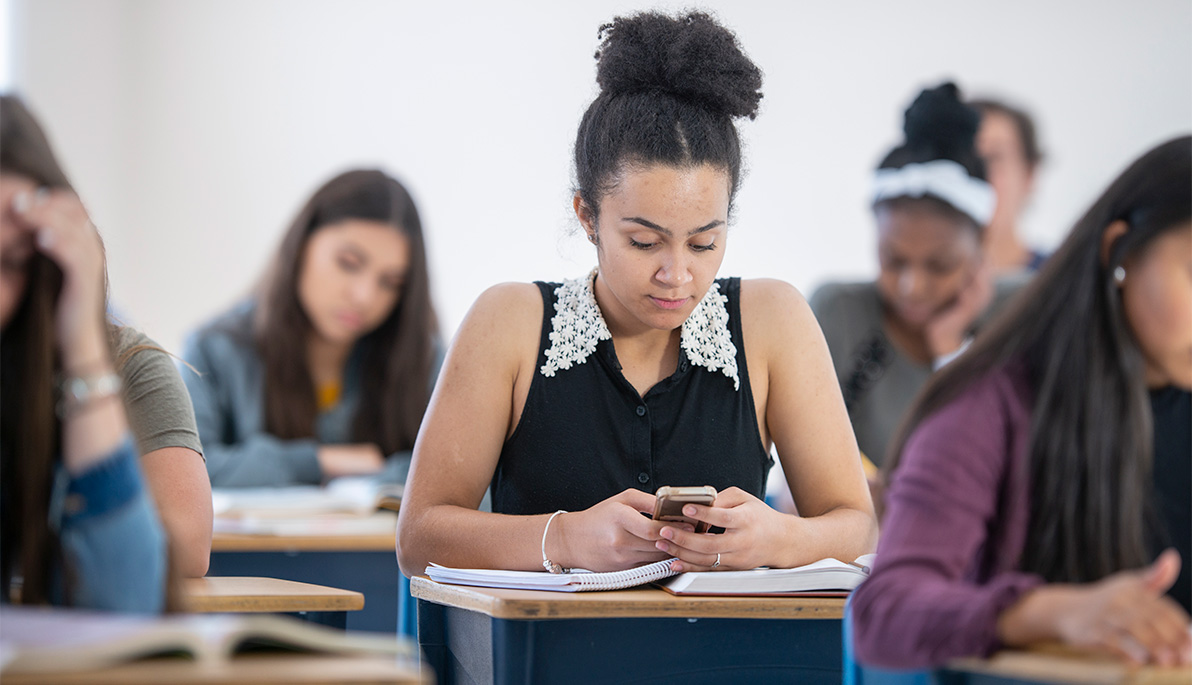News
Why We Need to Keep Smartphones Out of the Classroom
June 2, 2021
Gen Z’s screen time has skyrocketed amid the pandemic. The percent of teens spending nine or more hours per day on screens has doubled since before the stay-at-home orders and transition to remote learning.
“The steady stream of social media posts, misinformation, and polarizing headlines is slowly eroding our younger generations’ ability to think and effectively process information,” writes Melissa Huey, Ph.D., assistant professor of psychology, in an International Business Times op-ed.
Educators and parents alike will need to reckon with all of this in the aftermath of the pandemic. The first step: getting smartphones out of the classroom.
Today, 95 percent of teens own a smartphone. Most spend hours each day on social media platforms, where sensationalized posts often go viral without being fact-checked. The pandemic—and the digital dependencies it brought about—may have made this content even more accessible.
In a time of public health and political turmoil, Gen Z was craving news. Yet, with all of this technology at their disposal, few had the digital literacy to separate fact from fiction.
“Two-thirds of my own undergraduate students get their news from social media,” says Huey. “The constant stream of clickbait and misleading headlines often leads them to form hollow opinions based on peripheral information and emotions. Many fail to consider the legitimacy of an article’s sources or whether it cites sound data. Since they can’t respond objectively, they do so emotionally.”
Fortunately, it is possible to reverse these trends and teach young people to think critically, but educators have an outsized role to play.
“We may be students’ only source of information that doesn’t come from a screen,” writes Huey. “It’s imperative that we use our time with them to sharpen their minds and engage them in thoughtful conversation.”
That starts with separating students from their screens, by telling them to place their phones in a box or on a windowsill upon entry into the classroom.
From pre-K to higher ed, educators must also focus on teaching students how to think by crafting assignments that ask students to apply knowledge to new situations, instead of simply regurgitating it. That sentiment should also be incorporated into a new type of “home economics” course dedicated to teaching the life skills students need to succeed: critical thinking, conflict resolution, and argument methodology.
“In the face of unprecedented exposure to misinformation, these future leaders will need these competencies to resolve conflicts with composure and communicate constructively. Together, these actions will equip future generations with the critical thinking skills they need to navigate an increasingly connected yet ideologically divided world,” Huey writes.
Read the entire op-ed.
This op-ed is part of a campaign designed to help generate awareness and build reputation for New York Tech. Read more op-eds by institutional thought leaders.





